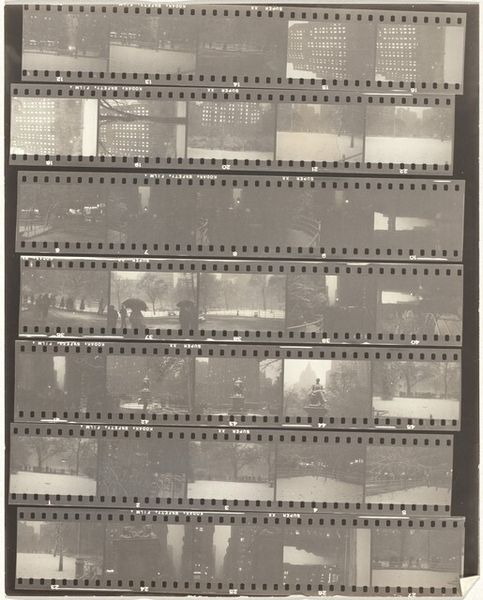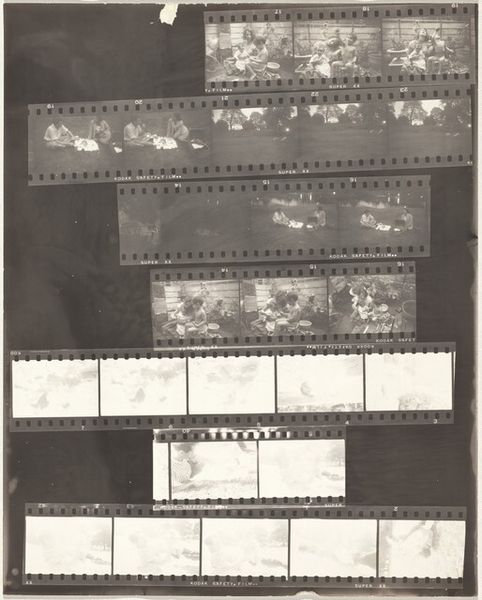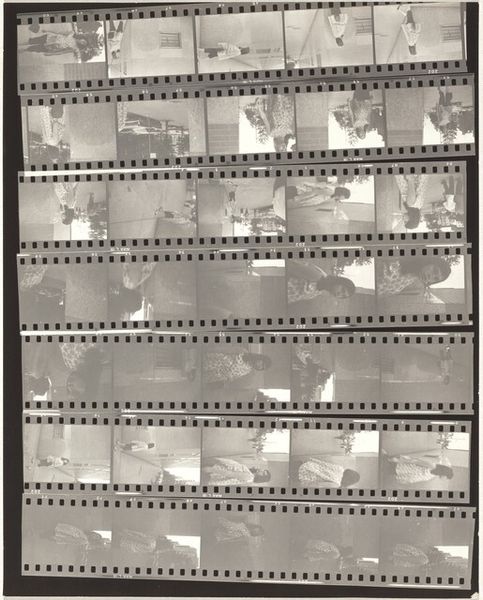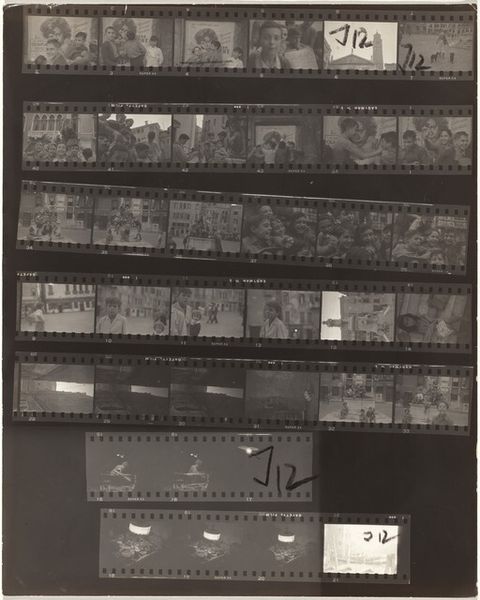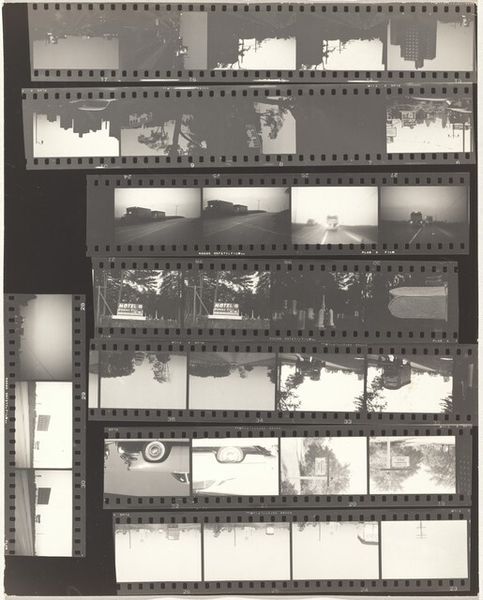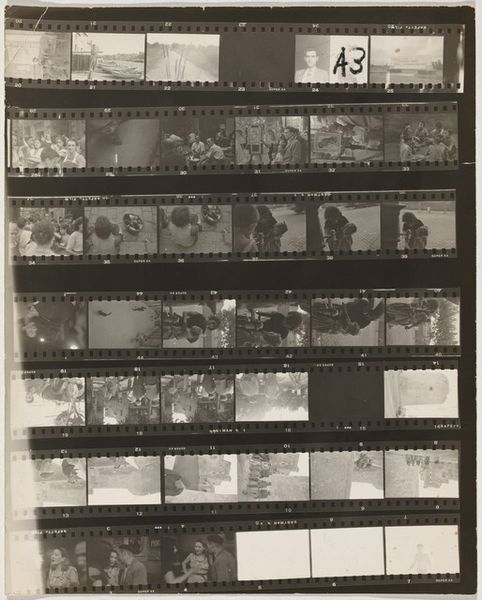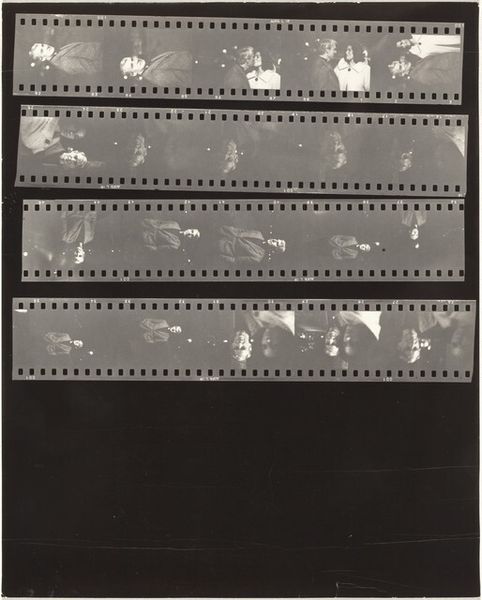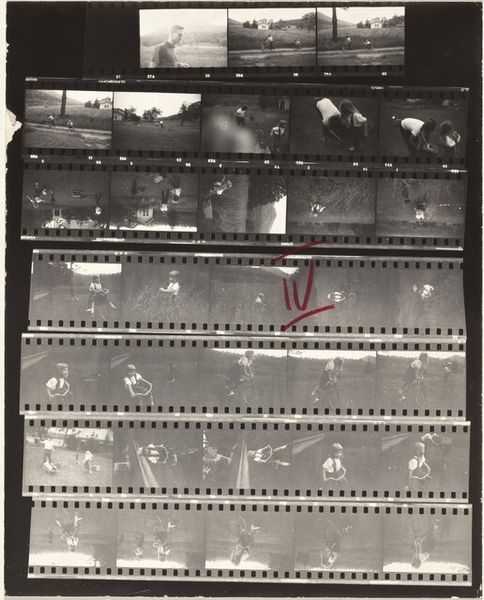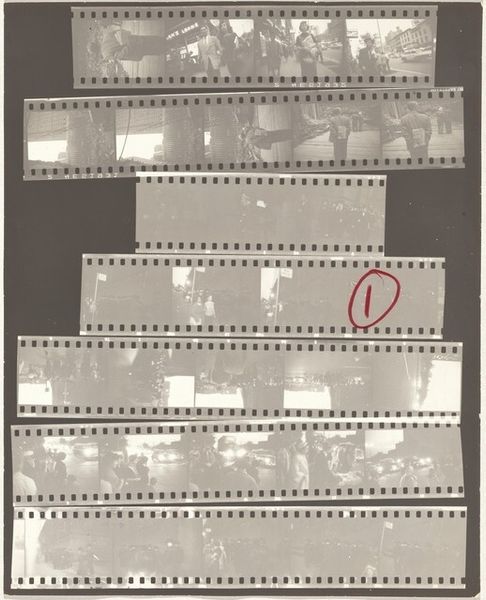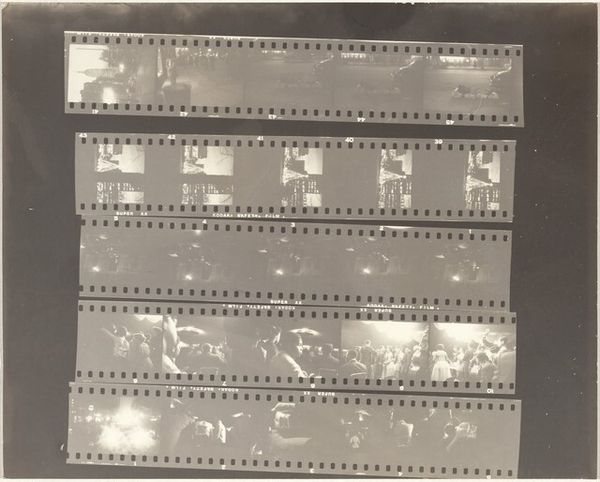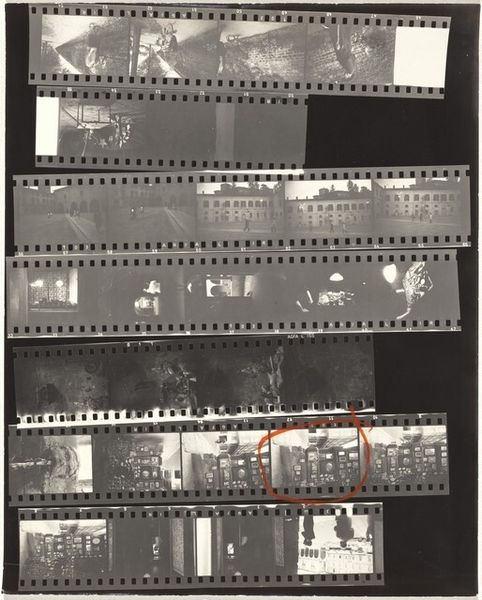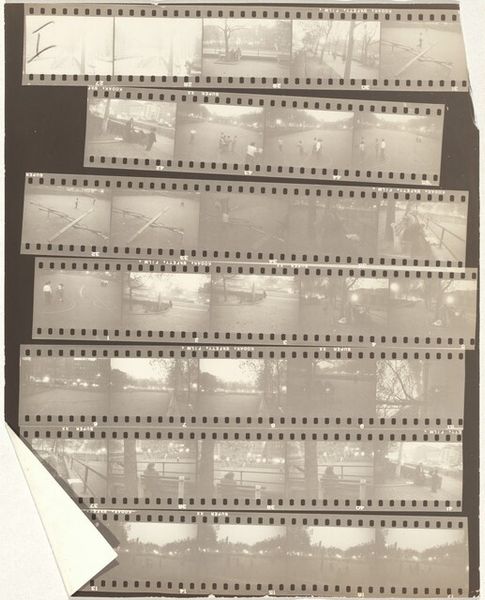
photography, gelatin-silver-print
#
portrait
#
abstract-expressionism
#
street-photography
#
photography
#
gelatin-silver-print
#
modernism
#
realism
Dimensions: sheet: 25.2 x 20.3 cm (9 15/16 x 8 in.)
Copyright: National Gallery of Art: CC0 1.0
Curator: This is Robert Frank’s "Subway no number," a gelatin silver print made in 1955. It’s one sheet of frames—photographic negatives showing a subterranean journey. Editor: Immediately, I'm struck by its fragmented yet rhythmic structure, almost like a musical score mapping out urban movement. The tonality evokes a stark and somewhat somber mood, typical of Frank. Curator: Precisely. Frank, at this time, challenged traditional photographic norms, employing techniques such as tilting the camera and manipulating contrast to capture candid moments with unflinching realism. Consider how he subverts expectations in his selection of shots, presenting the city dweller amidst this anonymous public space. Editor: Yes, there’s an apparent rawness. This photograph pushes the boundaries of what photography could convey by showing the grittiness of everyday labor—developing the film itself as another step of the process to show something that is beyond the final print. One can almost feel the chemicals, the developing fluids—it isn't polished but tactile. Curator: Indeed, these images possess a distinct material quality, diverging from a seamless, commercial appeal. There’s a focus on the negative itself, usually discarded in favor of the pristine positive print. It’s less about aesthetic idealism and more about representing authentic moments. Editor: Thinking about context, though, these images reflect a changing urban fabric. Look how Frank highlights details of commercial culture by placing an ad behind his characters' profiles. There’s no doubt in my mind that Frank aimed to confront social boundaries and offer an unromanticized view of American life through process as well as content. Curator: Perhaps a critique embedded in form? He certainly pushed photography’s material constraints and broke conventions of framing. It's in that fragmentation that the photograph gains its expressive power. Editor: Absolutely. In viewing Frank's methodology and artistic journey in this frame, a discussion opens around the artist as labor as he struggles within and reacts to American cultural and industrial changes. Curator: Well, whether deconstructing meaning through its raw structure or reevaluating historical context by assessing his role, it leaves one contemplating the very fabric of representation, wouldn't you agree? Editor: I do agree, it certainly shows how process is inseparable from its final representation and contextual reality.
Comments
No comments
Be the first to comment and join the conversation on the ultimate creative platform.
